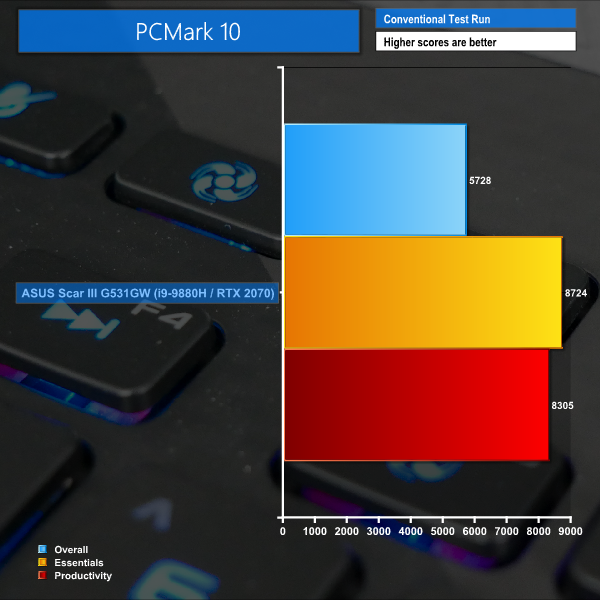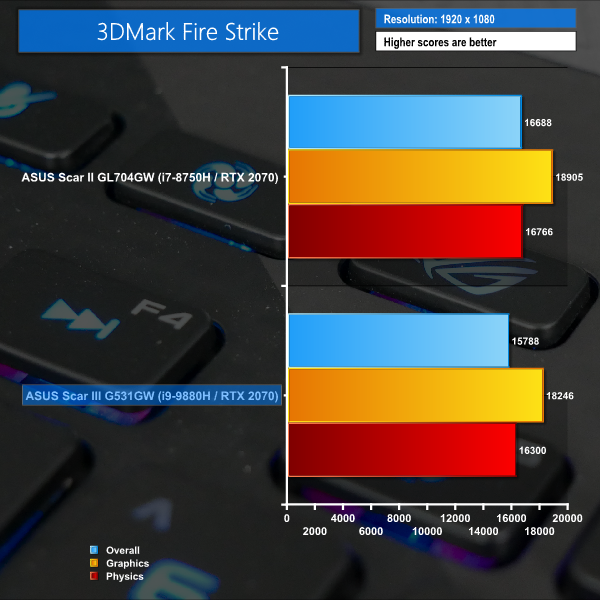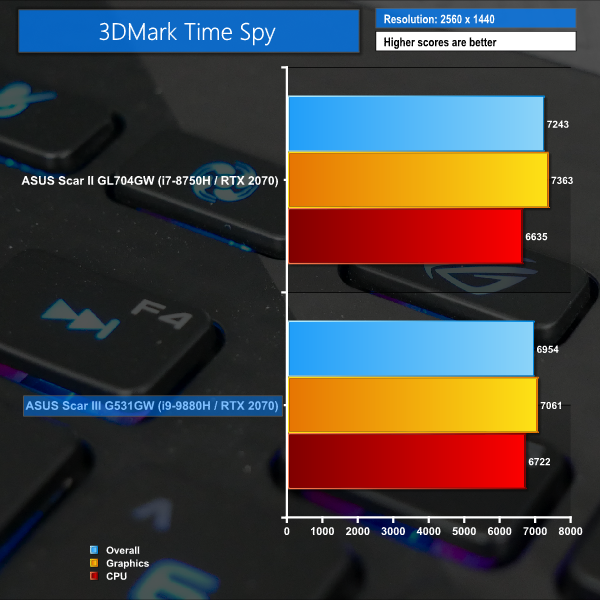Performance testing was conducted using ASUS’ ‘Balanced’ mode in the Armoury Crate software suite.
PCMark 10
PCMark 10 is the latest version in our series of industry standard PC benchmarks. Updated for Windows 10 with new and improved tests, PCMark 10 is also faster and easier to use.
PCMark 10 performance highlights the Scar III's ability to complete light general-usage tasks with proficiency.
3DMark
3DMark is a multi-platform hardware benchmark designed to test varying resolutions and detail levels of 3D gaming performance. We run the Windows platform test and in particular the Fire Strike and Time Spy benchmarks, which are indicative of high-end 1080p and 1440p PC Gaming.
A 3DMark Fire Strike overall score just shy of 16,000 is respectable and is around the expected level for an RTX 2070-equipped laptop. The same can be said for Time Spy.
The Physics/CPU scores in both cases were a little lower than we initially anticipated for the Core i9-9880H-equipped sample. However, further interpretation of the clock speeds highlights the struggle for ASUS’ chosen eight-core chip to maintain those lofty frequencies that game engines crave.
There simply isn’t enough power budget available to the chip to allow those heavily boosted frequencies to stick around long-term.Instead, a sub-3GHz settling frequency is generally seen across all eight cores. This looks to be a decisive factor in allowing similar performance to be obtained from the Core i7-8750H-equipped alternatives previously examined.
Meanwhile, the GPU frequency was hopping around clock speeds in the order of 1300, 1400, and 1500 MHz. GPU-Z suggests that power is the GPU Boost equation’s limiting factor in this test scenario, implying that ASUS' cooling solution is doing a stellar job at allowing the RTX 2070 mobile GPU to flex its might.
 KitGuru KitGuru.net – Tech News | Hardware News | Hardware Reviews | IOS | Mobile | Gaming | Graphics Cards
KitGuru KitGuru.net – Tech News | Hardware News | Hardware Reviews | IOS | Mobile | Gaming | Graphics Cards





